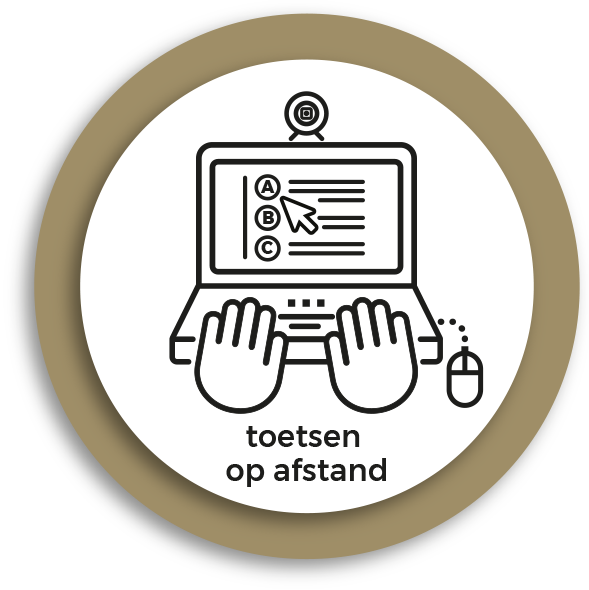Description
Often, you not only want to test knowledge, but its application too. This can be done in online exams, for example in the form of open-ended questions. Other options are open book exams or case study exams. Although these are less susceptible to cheating in their online form than exams with multiple choice questions alone, they are more labour-intensive. They are therefore more likely to be an option if you have help, such as a student assistant. You should therefore be realistic about what is possible in the time available.
Presentations, projects or products are often suitable for assessing application skills. Although presentations and interviews often take place face-to-face, they can also be carried out online using video conferencing software such as Zoom or Microsoft Teams. This saves travel time and costs for both students and examiners.
How
For groups of more than 100 students, an exam with open-ended questions alone is often inefficient.
If both knowledge and its application need to be assessed, you can reduce the workload by using a mixture of multiple-choice or fill-in-the-blank questions and open-ended questions. You can also use item banks or standard model answers, which only require the examiner to scan for certain terms.
Assessing presentations, projects or products can be very time-consuming, which is why this method may not seem to be an obvious choice at this scale.
If both knowledge and its application need to be assessed, you can reduce the workload by using a mixture of multiple-choice or fill-in-the-blank questions and open-ended questions. You can also use item banks or standard model answers, which only require the examiner to scan for certain terms.
Recommended assessment methods
Tips
Set a suitable time limit: too much time increases the risk of cheating, but too little time causes stress and reduces the validity of the exam results. See Van Berkel (1999) (in Dutch) for estimates of the time needed for different types of questions.
Emphasize the student’s ethical responsibility not to cheat.
Ensure good communication with the students.
- Be transparent about the online assessment process, so that students know what to expect. Let them know for example which personal details will be needed and what they will be used for, and what they need to have with them (e.g. a student card, telephone or camera).
- If online proctoring will be used, be clear about what the students can expect and what the rules are. Transparency about how the online proctoring will be implemented is essential. For more information, see the SURF online proctoring report: Surveilleren op afstand.
- You also need to let the students know about any technical requirements. At a minimum, students will need a stable internet connection. It is important to let the students know of any specific computer hardware requirements for the assessment software and to provide alternatives if this is not available.
Not every student has suitable living conditions with a quiet room to take an exam in. Where possible, offer an alternative, such as a room on campus that students can use.

